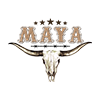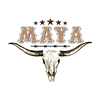From Local Pickup to Nationwide Dropshipping: DTF Transfers & UV DTF Strategies to Scale Your Custom Apparel Brand (Blank T‑Shirts, Hoodies & Hats)
DTF transfers and UV DTF have become cornerstone technologies for apparel entrepreneurs who want high-quality prints without the overhead of large inventory or complex screen setups. Whether you're testing local markets with same-day pickup or scaling to nationwide dropshipping, this long-form guide walks you through technical steps, operational systems, pricing, marketing, and how to leverage MAYA TX’s services — same-day pickup in Austin, nationwide shipping, dropshipping fulfillment, and a wide selection of blank apparel.
Quick overview: What you’ll learn
- How DTF transfers and UV DTF work and when to choose each.
- Comparisons with screen printing, DTG, and embroidery.
- Step-by-step workflows from local pickup to nationwide dropshipping.
- File prep, QC, and sample testing best practices.
- Pricing, margins, and fulfillment strategies to stay profitable.
- Marketing, SEO, and trending design ideas for 2025.
Why DTF transfers and UV DTF are game changers for custom apparel
DTF (direct-to-film) transfers let you print high-resolution, full-color artwork on a PET film, powder it with adhesive, cure it, and heat-press it onto garments. UV DTF adds UV-cured inks and coatings that improve durability, color vibrancy, and resistance to fading from sunlight — especially useful for hats and outdoor apparel.
Advantages for sellers:
- No high minimums — ideal for print-on-demand and market testing.
- Works on many fabric blends and dark garments using white underprint.
- Excellent photographic and gradient reproduction that traditional methods struggle to match.
- Quick set-up and consistent output suitable for dropshipping.
DTF vs DTG vs Screen Printing vs Embroidery
Choose based on design complexity, order volume, fabric, and budget.
- DTF transfers: Best for small runs, full-color designs, and mixed-fabric inventories. Low turn-up time and easy to dropship.
- UV DTF: Adds weather resistance and durability for hats and outdoor lines; slightly higher cost but better longevity.
- DTG (direct-to-garment): Great for soft-hand prints on 100% cotton; not ideal for dark blends without pre-treatment.
- Screen printing: Cost-effective at scale for simple color separations; higher setup costs and minimums make it less flexible for POD.
- Embroidery: Premium, durable branding for caps and polos but costly for complex, photo-like artwork.
How to move from local pickup to nationwide dropshipping: the roadmap
Scaling is operational, not just creative. Follow this phased approach:
Phase 1 — Local validation with same-day pickup
- Offer same-day pickup to reduce shipping friction and test product-market fit quickly. MAYA TX offers same-day pickup in Austin, which is perfect for market validation.
- Run pop-ups, farmers' markets, or local ad campaigns to get fast feedback.
- Use local sales to refine sizing, colorways, and copy before rolling out online.
Phase 2 — Establish repeatable production and QA
- Standardize mockups, product descriptions, and size charts for blank t-shirts, hoodies, and hats.
- Implement a sample testing protocol: one wash test, one wear test, and one fit/print check per SKU.
- Create a QA checklist: color match, adhesion, hand-feel, seam integrity, and label/pocket alignment.
Phase 3 — Integrate dropshipping fulfillment
- Move orders to a fulfillment partner that prints and ships directly to customers. MAYA TX provides DROP shipping fulfillment so you don’t hold inventory.
- Automate order transfer via API, CSV, or integration apps to minimize manual errors.
- Define SLAs: printing time, shipping windows, and returns handling.
Phase 4 — Scale marketing and operations
- Expand SKUs, run paid ads, optimize SEO, and build email funnels to increase AOV and lifetime value.
- Negotiate volume pricing and streamlined packaging options with your fulfillment partner to protect margins.
File prep and technical tips for reliable DTF prints
Good prints start with good artwork. Follow these actionable tips:
- Use vector art when possible for crisp lines; for raster images, prepare at 300 DPI at print size.
- Export files as PNG or TIFF with transparent backgrounds. Avoid lossy JPGs for complex designs.
- Include a white underprint layer for designs on dark garments; clarify with your printer whether they handle underprint automatically.
- Design with a safe margin; avoid printing within 0.25" of seams, zippers, and inner tags for hoodies and hats.
- Ask for ICC profiles or color proofs if color matching is critical. Always order a physical sample for new colorways.
UV DTF specifics: when to choose UV-cured finishes
UV DTF is particularly useful when prints need extra protection against sunlight, abrasion, or frequent washing. Use cases include:
- Hats and caps with curved brims or outdoor exposure.
- Merch for events, sports teams, and travel brands where durability matters.
- Limited edition drops that command premium prices for longevity.
Sampling and quality control checklist
Before accepting live orders, run this sample checklist:
- Print alignment and registration on multiple sizes.
- Wash test: three cycles, check cracking, fading, and hand-feel.
- Stretch test for prints on seams or ribbed areas.
- Adhesion test for hats and coarse fabrics.
- Packaging test to ensure prints aren’t damaged in shipping (fold lines, pressure points).
Pricing, margins, and unit economics
Print-on-demand and dropshipping reduce inventory risk but can compress margins. Here's how to preserve profitability:
- Calculate true landed cost: blank cost + printing + packaging + shipping + fulfillment fee + returns allowance.
- Target a gross margin of 40–60% on consumer apparel if you sell direct; for tight niches, 30% may be acceptable initially.
- Offer premium options (UV DTF, embroidery, limited runs) to increase AOV.
- Use bundles and upsells: add stickers, care cards, or branded packaging for perceived value.
Fulfillment and software integrations
Smooth operations come from reliable integrations. Key considerations:
- Shopify, Etsy, and other platforms: use apps or APIs to route orders directly to your fulfillment partner.
- Inventory sync: even with POD, track SKUs and blank availability to avoid surprise delays.
- Automated notifications: send customers tracking and production updates to reduce support tickets.
- Consider multi-location fulfillment if you scale beyond a single provider to reduce shipping times and cost.
Packaging, branding, and customer experience
Packaging is a branding opportunity. Small investments here improve perceived value and returns:
- Branded mailers, thank-you cards, and care instructions increase retention.
- Eco-friendly packaging is increasingly preferred — highlight sustainable blanks and inks if applicable.
- Protect prints during transit with tissue or a light poly bag to prevent scuffs and creases.
Marketing, SEO, and channel strategy
To rank and convert, combine SEO with marketplace and social strategies.
SEO tips
- Use target keywords naturally: 'DTF transfers', 'UV DTF', 'custom apparel', 'blank t-shirts', 'hoodies', 'hats', 'embroidery', 'print-on-demand', and 'dropshipping'.
- Create long-form content and product guides to capture informational queries (e.g., 'DTF vs screen printing').
- Optimize product pages with high-quality photos, descriptive alt text, and structured data for product schema.
Channels
- Etsy: great for niche, handcrafted aesthetics and small-batch runs.
- Shopify: best for brand control, integrations, and SEO. Leverage Shopify’s blog and apps — see the Shopify Blog for growth tactics.
- Marketplaces and POD partners: use Printful and similar services for inspiration and operational comparisons (Printful).
Trending designs and product ideas for 2025
- Local-first collections that start at pop-ups and scale nationally.
- Retro and nostalgia-driven palettes, reimagined with modern typefaces.
- Sustainability and cause-driven merch — customers pay more for transparency.
- Heat-sealed multi-panel designs on hoodies and sleeve prints for streetwear appeal.
Operational pitfalls and how to avoid them
- Poorly specified artwork: maintain a robust upload guide for customers to reduce reworks.
- Unclear shipping promises: publish realistic lead times and carrier options.
- Not testing fit: always offer size charts, model photos, and return guidance.
- Neglecting customer service: fast response and clear return policies increase buyer confidence.
Sustainability, materials, and consumer expectations
Consumers increasingly expect eco-conscious choices. Consider:
- Organic cotton or recycled blends for premium lines.
- Water-based inks or certifications for lower environmental impact.
- Transparent product pages that show fabric composition and origin.
Legal & IP considerations
- Obtain rights for artwork and licensed marks; enforceable takedowns on marketplaces can be slow and costly.
- Consider trademarks for brand names and unique logos to protect your identity.
- Document supplier agreements and SLAs to clarify responsibility for print defects and returns.
Checklist to launch a fully scalable DTF dropshipping brand
- Select 10 core SKUs across blank t-shirts, hoodies, and hats. Use MAYA TX’s blank apparel catalog to test multiple blends and price tiers (Blank Apparel).
- Create 30 tested designs including seasonal capsules and evergreen staples.
- Order samples and run wash/adhesion tests, including UV DTF variants for hats and outdoor pieces.
- Set up storefronts (Shopify/Etsy) and integrate with fulfillment (MAYA TX dropshipping). Links: DTF Transfers, UV DTF.
- Publish SEO-optimized product pages and educational blog content to attract organic traffic.
- Launch with targeted ads, and follow up with email flows for cart recovery and post-purchase cross-sells.
Resources & further reading
- MAYA TX DTF Transfers
- MAYA TX UV DTF
- MAYA TX Blank Apparel
- Printful — print-on-demand & fulfillment resources
- Shopify Blog — eCommerce growth and SEO
- Oberlo — dropshipping insights and trends
Final thoughts and call to action
DTF transfers and UV DTF offer a practical, high-quality path for apparel entrepreneurs to scale from local pickup to nationwide dropshipping. Start locally to validate designs and sizing, then partner with a fulfillment provider that understands your brand needs — same-day pickup in Austin, nationwide shipping, dropshipping fulfillment, and an extensive blank apparel selection are the pillars that let you grow without inventory headaches.
Ready to scale your custom apparel brand? Explore MAYA TX services and get started today:
- Order DTF Transfers
- Shop Blank T‑Shirts, Hoodies & Hats
- Set up dropshipping fulfillment with MAYA TX
Have questions about file prep, UV DTF durability, integrations, or pricing? Contact MAYA TX support to request samples, confirm color profiles, and discuss volume pricing to keep your margins healthy as you scale.


















